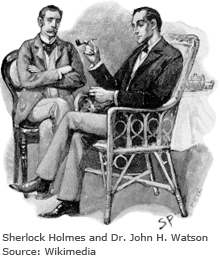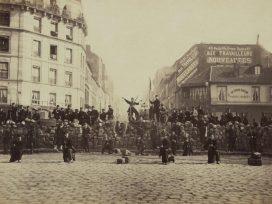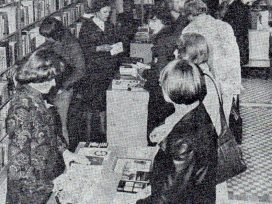Weeks away from graduating from Ohio State, there I was in Peter Taylor’s office. Winner of the previous year’s prestigious O’Henry Award, he still, after two terms in his fiction-writing class, inspired so much awe in me that I could scarcely believe the wondrous things he was saying about my latest short story. But my greatest challenge lay ahead, he said. Like all novice writers, I had to find the type of ore – the material – that I wanted foremost to mine.
I already knew. The world renowned Sheppard Murder Case – the inspiration for both a popular long-running TV series and a film called The Fugitive – had happened right in my hometown of Bay Village, Ohio, on 4 July 1954, shortly after my sophomore year in high school. Not only did I know all the principals, but Dr Sam Sheppard had been my physician and in the years since I’d grown morally certain that he’d been convicted of his wife Marilyn’s slaying not on hard evidence but primarily because the muck-raking Cleveland Press had crusaded for his arrest almost as soon as the murder occurred and had then crucified him at his trial. (Indeed, the Sheppard Case became a legal landmark in that it permanently altered how the media are permitted to describe murder suspects.)

In addition, two classmates of mine had babysat regularly for the Sheppards’ son, Sam Jr. and could provide anecdotes of how the couple interacted. At Sheppard’s trial his relationship with his wife had been painted as troubled. Their difficulties multiplied after Susan Hayes, a former nurse at the hospital he and his two brothers co-owned in Bay Village, vindictively testified that she’d had a torrid affair with him and that he’d fallaciously promised to leave his wife and marry her.
Yet another bonanza was that the Bay Village mayor, and not the police, had been the first person Sheppard called after his wife was slain by an unknown person he initially depicted as a “bushy haired intruder”. When Sheppard finally spoke to the police, he recounted that on the eve of 4 July he had fallen asleep on a downstairs couch following a long day of surgery and been awakened during the night by scuffling sounds coming from the upstairs master bedroom, where his wife was sleeping. After racing to investigate, he saw a shadowy figure bludgeoning his wife with an object of some sort and was flattened when he tried to rescue her. Upon regaining consciousness and ascertaining that his wife was dead, through a window he saw his assailant trotting along the Lake Erie beach fronting his house and went in his pursuit. The two then fought again on the beach, and Sheppard was left semiconscious at the water’s edge with a severe neck injury.
Sheppard’s story of the murder along with his initial call to the mayor rather than the police seemed so implausible that from the outset the Cleveland Press launched an outcry that the neck injury was fraudulent, a massive cover-up was being engineered by the Sheppard family, and only Sheppard’s privileged professional and social status protected him from being arrested. Recognizing he was out of his element, the small-town Bay Village police chief called on the Cleveland police for help, but by the time they arrived the murder scene was hopelessly compromised. The murder weapon was never found, nor was it ever established what it was. There were fingerprints and footprints galore, but none of them, in key locations, belonged to Sheppard. Not until years after his conviction for his wife’s murder did it surface how much vital information the police had concealed from his defence team. A third blood type belonging neither to Sam or Marilyn was found amid the spatters on the wall of the murder room; judging from the angles of the blows Marilyn received the killer was probably left-handed (Sheppard was right-handed); it had taken so many whacks to kill Marilyn that evidently her slayer was not particularly strong, may have used a weapon as insubstantial as a candlestick or an automobile hood ornament and could have been a woman.
Yet the athletic Sheppard testified the killer had been powerful enough to subdue him not once but twice during the savagery of the murder night.
I had theories to account for the maze of contradictory and missing pieces in the Sheppard Case. But I quickly realized that while I had pages of notes for my prospective novel, I lacked a key ingredient when I began writing it after finishing college. Who was going to tell my story? Robert Penn Warren solved that problem in All the King’s Men by creating Jack Burden, a sort of ever-present bystander to Warren’s fictional version of the rise and fall of Louisiana Governor Huey Long, but I lacked the wherewithal at age 21 to mold a character with Burden’s worldliness to serve as my voice. Eventually my frustration over my inability to make any headway on my driving ambition, led me to examine why, apart from the fact that it had happened so close to home, I’d become so fixated on the Sheppard Case in the first place.
When I shelved my desire to write The Great American Novel and returned to the arena where I’d achieved my only success thus far – writing short stories – I was disconcerted to discover that I wasn’t fixated on the Sheppard Case. My brain appeared to be fixated on murder itself. My first published story dwelled on a shy young man who discovers after accidentally strangling his girlfriend that he’s a closet necrophiliac. Soon afterward I wrote a prize-winning novella about a fight on a produce loading dock that ended in the death of one of the combatants under circumstances that from the narrator’s point of view pointed to murder. When my next story threatened to expand into the study of a boy who becomes a serial killer of young girls by the time he reaches adolescence, I could no longer avoid some long nights of introspection.
What was it, anyway, that unremittingly turned my creative juices to murder? Sure, I could recall that the first story I ever read that really resonated in me was the Sherlock Holmes novella, A Study in Scarlet and I’d always had a penchant for detective magazines and true crime books. Further, I had no doubt been influenced by the bizarre events in my own immediate neighbourhood during my childhood. The woman who had been found asphyxiated in her garage with the motor of her Studebaker running and a half eaten plate of fried chicken in her lap. The president of the Bay Village Women’s Club whose car had mysteriously stalled on a railroad track while she was driving another woman club member home, promoting speculation that the two were having an affair and had made a suicide pact. The brother of one of my friends who died of a broken neck while playing tag in a house under construction directly across the street from me when he fell (or was pushed by another boy according to rumour) through a gap in the skeletal second story.
And of course I could still name all the bullies and teachers I had fantasized killing as far back as kindergarten.
Meanwhile Sam Sheppard was back in the limelight. In 1966, after serving over ten years in prison, he earned a new trial at which he’d been found not guilty. But any hopes of resurrecting my novel about his case were dashed by the fact that Sheppard’s lawyer, F. Lee Bailey, had sworn in his opening remarks that the trial would reveal Marilyn Sheppard’s real killer and the County Coroner, Sam Gerber, likewise swore he’d produce a facsimile of the murder weapon. But neither had delivered on his promise, leaving all still mystified how and by whose hand Marilyn Sheppard had been slain. Older now, and wiser about my own limitations, I realized that the story had become too complex, riddled with too many unknowables for me to convert into a novel. I toyed with writing a true crime book, but that too had pitfalls. For one, during the years while Sheppard was in prison the mayor of Bay Village and his wife had both become prime suspects after tales circulated that the mayor’s wife had discovered he’d been having an affair with Marilyn. To use their real names when their involvement was only conjecture invited a law suit, and to change not only their names but others as well to protect the innocent would, I felt, eviscerate the book.
So I continued to churn out stories while I worked at a string of jobs to support myself – a vocational training counsellor, then a middle school guidance counsellor and finally a New York State Parole Officer. The summer after I’d been appointed a Senior Parole Officer and the job had begun to seem as if it might become, by default, a career, I received a fellowship to Yaddo, the queen of artists’ and writers’ colonies. During my six weeks there I devoted myself into overcoming my largest weakness as a novelist: creating and sustaining a plot. Harking back to the nights I spent devouring Sherlock Holmes, I opted to tackle a who-dun-it that I tentatively titled Bright Lights, Dark Rooms.
Alas, my momentum dissolved once I was back at my Parole job with little time to write. But then one afternoon my agent called to say that MacMillan had bought a baseball quiz book I’d written several years earlier on a lark without ever really expecting to sell it.
I took the meagre 3,000 dollar advance I was given as the impetus to quit my job and head for California. It was crazy. I knew almost no one there. But nothing could dampen my exhilaration when I rented a furnished cottage near a wood in Marin County and sat for the first time behind what for the next nine months would be my desk: a ping pong table, net and all. On that table I hammered out the rest of Bright Lights, Dark Rooms, which became my first published novel. Three years later I followed it with my second novel Mad Blood, another who-dun-it centring on my experiences as a parole officer. But now that I’d finally mastered plotting a novel, I sensed my gift wasn’t unraveling murders but exploring the psychology of those drawn to commit them. My third novel, The Systems of M.R. Shurnas, featured a tennis teaching pro so unaware that his world has gone awry that he becomes enmeshed in a chain of events that are repeated over and over again, each seemingly ending in the murder of the same woman. Ever since, my protagonists have been marginal figures, often men driven to murder in their quest to find unconventional systems to survive in what to them is an alien and hostile universe.
Yet I’m still haunted by reminders that I never mined my original mother lode when it was still pure gold. The harshest came several years ago. While living in San Francisco, a high school classmate of mine, who also lived there, was murdered just as he was about to testify in a fraudulent bankruptcy case. Two veteran homicide detectives questioned me after finding a message from me on his voice mail. When I mentioned that both he and I had been tangentially involved in the Sheppard Murder Case, the pair exchanged blank looks. “The who?” I literally felt my blood curdle.







